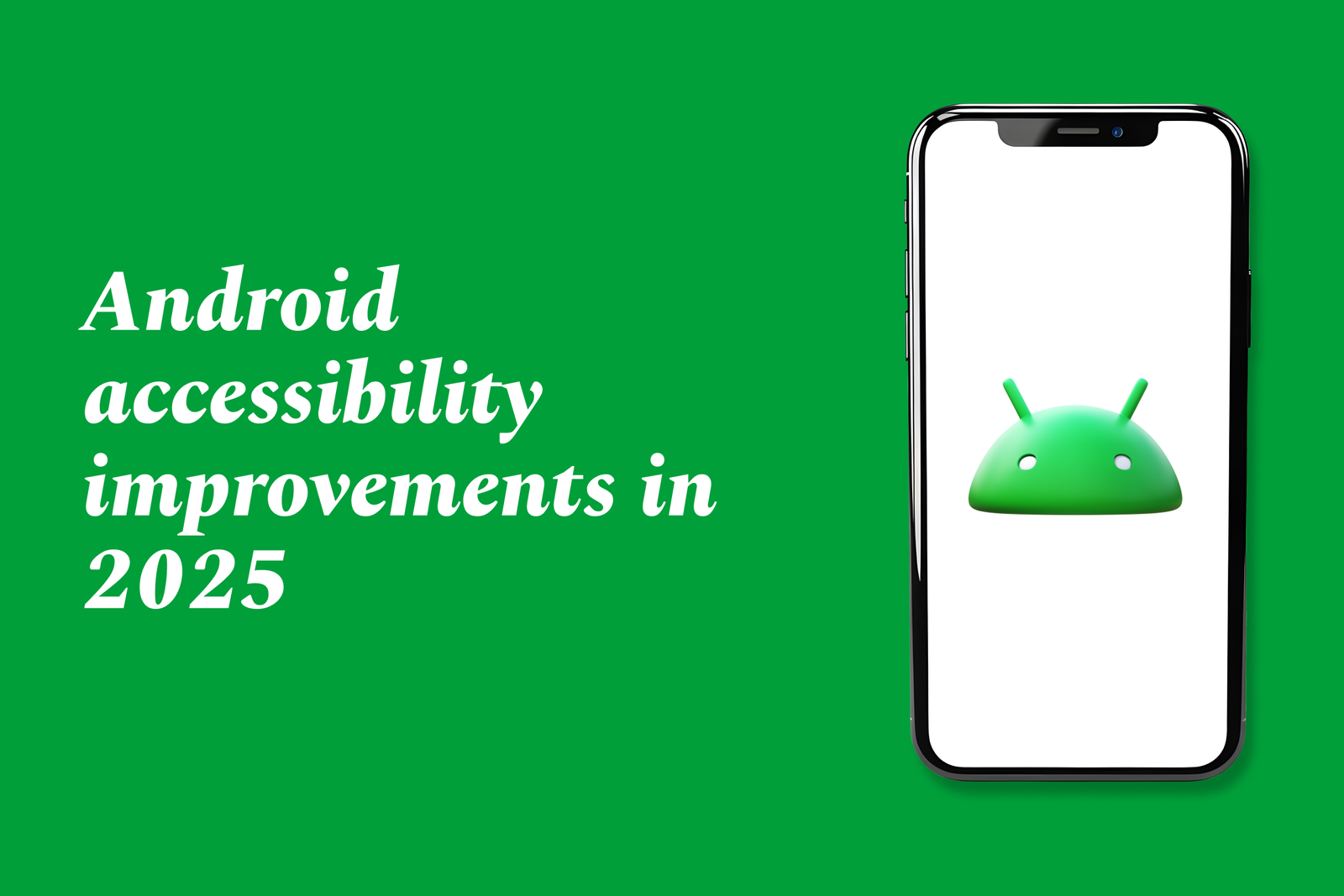Android Accessibility Improvements In 2025
In 2025, Android enhances accessibility with improved Scene and Message Center features, faster loading, better assistive feedback, advanced camera controls, and refined user interactions—ensuring a more inclusive, intuitive, and seamless experience for all users.
Android accessibility improvements in 2025
1 ) Enhanced Accessibility Features in Android SDK
The 2025 updates to Android SDK, particularly versions 19.9.0 through 19.9.2, focus extensively on accessibility improvements for Scenes and Message Center functionalities. Key fixes include:
Accessibility fixes addressing Scene layout, modal frames, margins, border rendering, and corner radius adjustments.
Added support for more flexible survey toggles to improve user interaction.
Accessibility dismissal announcements for in app messages enhance feedback for users relying on assistive technologies.
Better lifecycle management of accessibility listeners to prevent leaks and improve stability.
2 ) Improved User Experience and Performance
Scenes now load faster with concurrent asset prefetching, smoothing interaction especially for users relying on assistive technologies.
Message Center reliability increased by automatic retries on failed message list refreshes, ensuring consistent access to content.
Usability improvements in grouping controls, group volume, and message browsing also contribute to accessibility by simplifying navigation.
3 ) Support for Advanced Camera Controls
Android 16 introduces hybrid auto exposure modes allowing fine control of ISO and exposure time alongside automatic adjustments, benefitting users needing customizable photographic experiences.
Precise color temperature and tint adjustments support professional video recording with manual white balance control, expanding accessibility for creative users.
New Intent actions for motion photo capture simplify multimedia accessibility and integration.
4 ) Commitment to Privacy and Inclusive Design
Ongoing enhancements include improved privacy features and continuity in supporting a platform that prioritizes security without sacrificing accessibility.
5 ) Forward Looking Development
Android’s road map continues to prioritize enabling creative expression, professional experiences, and seamless use of multiple device types with integrated accessibility support embedded throughout the platform.
In summary, Android’s 2025 platform updates demonstrate a strong commitment to improving accessibility through technical fixes, user interface enhancements, and expanded controls, ensuring an inclusive and empowering environment for all users.
https://justacademy.in/news-detail/google-i/o-2025-highlights:-flutter-takes-the-lead
https://justacademy.in/news-detail/new-features-in-flutter-4.0-stable
https://justacademy.in/news-detail/flutter-vs-swiftui:-ios-devs-take-note
https://justacademy.in/news-detail/flutter-native-compilation-for-web
https://justacademy.in/news-detail/flutter-theme-extensions-in-latest-version
Related Posts
Java supports GDPR and data privacy by enabling secure data handling through encryption, controlled access, and precise data management. It allows developers to minimize PII exposure, ensure data confidentiality, and design workflows that comply with data protection regulations effectively.
Java code quality tools have evolved to include advanced static analysis, integrated security checks, and AI-powered code reviews. These updates help developers detect bugs, enforce coding standards, and enhance security, streamlining the development process and improving overall code reliability.
Java remains a cornerstone in big tech companies, evolving with modern features like records, pattern matching, and virtual threads. Its robust ecosystem, enhanced performance, and growing AI integrations keep it vital for both legacy systems and innovative new projects.
Java and CI/CD pipeline optimizations streamline Java application development by automating builds, tests, and deployments. They improve efficiency through parallelization, caching, and secure secrets management, enabling faster feedback loops and more reliable, scalable software delivery.
Java supports modern cryptography standards through its flexible Java Cryptography Architecture (JCA), enabling integration of advanced algorithms like AES, EdDSA, and post-quantum tools. Libraries like Bouncy Castle offer FIPS-certified, hardware-accelerated implementations for secure development.
Java 23 enhances record patterns by enabling concise, direct destructuring of record components within pattern matching, simplifying type checks and data extraction. This improvement boosts code readability and expressiveness by reducing boilerplate in handling immutable data classes.
Java remains a top choice for mobile app backends, powering scalable, secure, and high-performance server-side solutions. Latest trends include cloud-native microservices, reactive programming, and enhanced JVM optimizations, enabling efficient, flexible, and robust mobile backend development.
Java SE 24 and LTS Java SE 21 offer enhanced features and performance, while Apache Spark 4.0.0 introduces Scala 2.13 support and advanced ML and SQL capabilities. Together, they empower developers to build scalable, high-performance data applications with modern tools.
JUnit 5 modernizes Java testing with a modular architecture, improved assertions, and seamless Java 8+ support. Beyond JUnit, tools like Mockito and AssertJ enhance mocking and assertions, creating a powerful, flexible ecosystem for writing clean, efficient Java unit tests.
Java plays a pivotal role in cloud automation tools by providing a robust, platform-independent language used to build scalable automation frameworks like Jenkins and Selenium, enabling efficient CI/CD pipelines, testing, and orchestration across diverse cloud environments.










